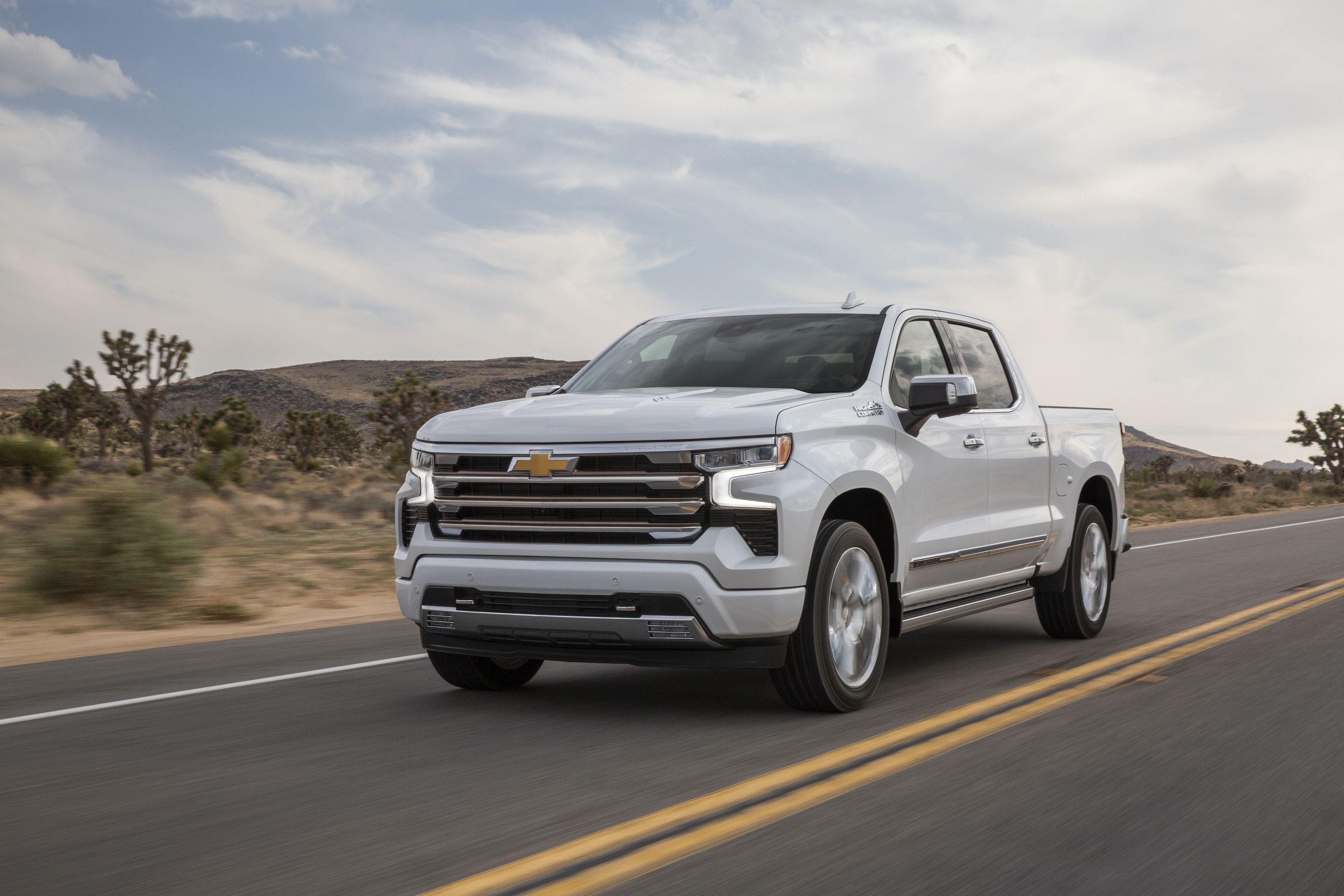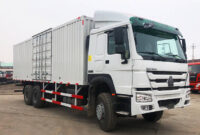Chevy S-10 Pickup Trucks For Sale: A Comprehensive Buyer’s Guide pickup.truckstrend.com
The Chevrolet S-10 pickup truck, a compact workhorse that graced American roads for over two decades, remains a beloved and highly sought-after vehicle in the used truck market. From its humble beginnings in 1982 to its final iteration in 2004, the S-10 carved out a reputation for being a versatile, reliable, and affordable pickup. For those seeking a practical daily driver, a light-duty work truck, an off-road project, or a customizable canvas, the Chevy S-10 pickup truck for sale offers an intriguing proposition. This comprehensive guide will delve into everything you need to know when considering purchasing one of these enduring machines, helping you navigate the market and make an informed decision.
I. Why Choose a Chevy S-10? The Enduring Appeal
Chevy S-10 Pickup Trucks For Sale: A Comprehensive Buyer’s Guide
The continued popularity of the Chevy S-10 in the used vehicle market isn’t accidental. Several key factors contribute to its enduring appeal:
- Versatility: The S-10’s compact size makes it agile in city traffic and easy to park, yet its bed offers ample space for hauling gardening supplies, tools, or weekend adventure gear. Available in various cab configurations (Regular, Extended) and drivetrains (2WD, 4WD), it can adapt to a wide range of needs.
- Affordability: Compared to full-size pickups, the S-10 is significantly more budget-friendly to purchase and often to insure. Its widespread production means parts are generally plentiful and inexpensive, contributing to lower ownership costs.
- Reliability (with caveats): While not without their common issues (which we’ll discuss), S-10s are known for their relatively simple mechanical design. With proper maintenance, many S-10s have easily surpassed 200,000 miles, making them a durable choice for long-term ownership.
- Customization Potential: The S-10 boasts an enormous aftermarket support network. Whether you’re looking for performance upgrades, lift kits, lowering kits, aesthetic modifications, or custom fabrication, the S-10 is a dream platform for enthusiasts.
- Fuel Efficiency: While not a hybrid, the S-10’s smaller engines (especially the 4-cylinder) offer better fuel economy than most full-size trucks, making it a more economical choice for daily commuting.

II. Generations and Key Differences: What to Look For
Understanding the two main generations of the Chevy S-10 is crucial as they present different characteristics and common issues.
-
First Generation (1982-1993):
- Characteristics: These models feature a distinctly boxy, utilitarian design that many classic truck enthusiasts appreciate. The interiors are simple and functional.
- Engine Options: Early models came with a 2.0L 4-cylinder or a 2.8L V6. Later models introduced the more robust 4.3L V6, which became a popular choice.
- Pros: Generally very affordable, simple mechanics that are easy to work on, strong nostalgic appeal.
- Cons: Older technology, less refined ride, more susceptible to rust due to age, carbureted engines on early models can be finicky.
-
Second Generation (1994-2004):
- Characteristics: This generation received a significant redesign, featuring a more aerodynamic body, a modern interior, and improved ride quality. It’s the most common S-10 you’ll find for sale.
- Engine Options: Primarily offered with the 2.2L 4-cylinder (TBI or SFI) and the highly popular 4.3L V6 (Vortec). The 4.3L V6 is often recommended for its balance of power and durability.
- Pros: More refined driving experience, updated safety features (like airbags), wider availability of parts and models, the 4.3L V6 is a proven workhorse.
- Cons: Some known issues (detailed below), can still suffer from significant rust in salt-belt regions.
Cab Configurations & Drivetrains:
Both generations were available as Regular Cabs (two doors) and Extended Cabs (with small jump seats behind the main seats). Second-gen extended cabs also offered various configurations including a 3rd door on the passenger side for easier rear access. Drivetrain options included 2-wheel drive (2WD) and 4-wheel drive (4WD), with 4WD models typically commanding a higher price due to their added capability.
III. Where to Find Your S-10: Navigating the Market
The search for a Chevy S-10 pickup for sale primarily revolves around the used vehicle market.
- Online Marketplaces:
- Craigslist & Facebook Marketplace: These are excellent starting points. You’ll find a wide range of conditions and prices, often directly from private sellers. Be prepared to sift through many listings and act quickly on good deals.
- eBay Motors: Useful for finding specific models, highly customized trucks, or those in regions further away. Auctions can sometimes yield bargains.
- Autotrader & CarGurus (Used Sections): While primarily for newer vehicles, you might find some higher-end or dealership-sold S-10s here.
- Used Car Dealerships: Less common for older S-10s, but some smaller, independent lots might have them. Prices here might be slightly higher, but you may get some limited warranty or reconditioning.
- Local Classifieds/Word of Mouth: Don’t underestimate the power of local advertising or simply asking around. Many older trucks are sold this way.
- Specialty Truck/Enthusiast Forums: Websites dedicated to S-10s or compact trucks can be great places to find well-maintained examples from fellow enthusiasts, though prices might reflect the care given.
- Auto Auctions: If you’re mechanically inclined and willing to take a risk, public auto auctions can offer very low prices, but vehicles are sold "as-is" with little to no inspection.
IV. Essential Pre-Purchase Checklist: What to Inspect
Before handing over your hard-earned cash, a thorough inspection is paramount. Many S-10s are older and have been through a lot.
-
Mechanical Inspection:
- Engine: Check for leaks (oil, coolant, power steering), unusual noises (knocks, ticks, squeals), excessive smoke from the exhaust (blue for oil, white for coolant, black for rich fuel mixture), and the "Check Engine" light.
- Transmission: Ensure smooth shifts in both automatic and manual transmissions. Test all gears, including reverse. Look for slipping or harsh engagement.
- Brakes: Feel for pulsation in the pedal (warped rotors), listen for grinding or squealing. Check the ABS light.
- Suspension & Steering: Listen for clunks or squeaks over bumps. Check for excessive play in the steering wheel. Look for worn ball joints, tie rods, and leaky shocks/struts.
- Tires: Inspect tread depth and look for uneven wear, which can indicate alignment or suspension issues.
- 4WD System (if applicable): Engage and disengage 4WD (High and Low range) to ensure it works smoothly. Listen for grinding or binding.
-
Body & Frame Inspection:
- Rust: This is a major concern, especially on first-generation models and second-generation trucks from salt-belt states. Pay close attention to:
- Rocker panels (below the doors)
- Cab corners (behind the doors)
- Wheel wells and fender lips (especially rear)
- Bed floor and supports
- Frame rails: Critically important. Look for severe rot, not just surface rust.
- Accident Damage: Look for misaligned body panels, inconsistent paint color, overspray, or signs of poorly repaired damage.
- Bed Condition: Check for significant dents, rust, or damage, especially if a bed liner isn’t present.
- Rust: This is a major concern, especially on first-generation models and second-generation trucks from salt-belt states. Pay close attention to:
-
Interior Inspection:
- Condition: Assess seats, dashboard, headliner, and door panels for rips, cracks, or excessive wear.
- Electronics: Test all lights, wipers, horn, radio, power windows, power locks, heating, and air conditioning. A non-functional A/C can be a costly repair.
-
Documentation:
- Ensure it’s clean (not salvage or rebuilt) and matches the seller’s ID.
- Service Records: Ask for any maintenance history.
- VIN Check: Run a CarFax or AutoCheck report to verify mileage, accident history, and previous ownership.
V. Common Issues and Solutions for S-10s
While generally reliable, S-10s do have some recurring issues worth noting:
- 4.3L V6 Engine:
- Intake Manifold Gasket Leaks: A very common issue, especially on 1996+ models, often leading to coolant leaks (look for pink crusty residue if Dex-Cool was used) or oil leaks. Repair involves replacing the gaskets, which can be a significant DIY job or a moderate mechanic bill.
- Distributor Cap & Rotor: Prone to wear, leading to misfires or rough idling. Relatively easy and inexpensive to replace.
- Crankshaft Position Sensor: Can cause no-start conditions or stalling.
- 2.2L 4-Cylinder Engine:
- Timing Chain Wear: Can become noisy at higher mileage.
- Oil Leaks: Especially from the oil filter adapter or valve cover.
- ABS Light: Often triggered by faulty wheel speed sensors (especially front) or a corroded wiring harness.
- Fuel Gauge Inaccuracies: Common problem, usually due to a faulty fuel level sender unit within the fuel pump assembly.
- A/C System Leaks: Hoses and components can dry rot or develop leaks over time.
- Rust: As mentioned, prevalent in areas exposed to salt. Solutions range from minor patch panels to more extensive frame repair, depending on severity.
- Power Window Motors: Can fail, leading to slow or non-functional windows.
Solutions: Many of these issues are well-documented online, and parts are readily available. For the DIY enthusiast, the S-10 is generally straightforward to work on. For more complex repairs, a local mechanic familiar with GM trucks will likely have experience with these common problems.
VI. Pricing Your S-10: Factors Influencing Value
The price of a Chevy S-10 can vary wildly depending on several factors. The table below provides a general range, but always remember that local market conditions, seller motivation, and specific vehicle history play a huge role.
| Generation | Engine | Drivetrain | Condition: Fair (Needs Work) | Condition: Good (Driver) | Condition: Excellent (Well-Maintained) |
|---|---|---|---|---|---|
| 1st Gen | 4-cyl | 2WD | $500 – $1,500 | $1,500 – $3,000 | $3,000 – $5,000+ |
| (1982-1993) | V6 | 2WD | $700 – $2,000 | $2,000 – $4,000 | $4,000 – $7,000+ |
| V6 | 4WD | $1,000 – $2,500 | $2,500 – $5,000 | $5,000 – $8,000+ | |
| 2nd Gen | 4-cyl | 2WD | $800 – $2,000 | $2,000 – $4,000 | $4,000 – $6,000+ |
| (1994-2004) | 4-cyl | 4WD | $1,200 – $2,500 | $2,500 – $4,500 | $4,500 – $7,000+ |
| 4.3L V6 | 2WD | $1,000 – $2,500 | $2,500 – $5,000 | $5,000 – $8,000+ | |
| 4.3L V6 | 4WD | $1,500 – $3,500 | $3,500 – $7,000 | $7,000 – $12,000+ |
Factors that influence pricing:
- Condition: The single biggest factor. A rust-free, well-maintained S-10 will command a premium.
- Mileage: Lower mileage generally means higher prices, though age and maintenance history are equally important.
- Year/Generation: Second-generation V6 4×4 models tend to be the most desirable and expensive.
- Options: Air conditioning, power windows/locks, cruise control, and specific trim levels (e.g., ZR2 off-road package) can increase value.
- Modifications: Performance or desirable aesthetic modifications can sometimes increase value, but poorly executed mods can decrease it.
VII. Frequently Asked Questions (FAQ)
- Are S-10s reliable?
Yes, generally. While they have common issues typical of vehicles their age, their simple design makes them relatively easy to maintain and repair. Proper pre-purchase inspection and regular maintenance are key to long-term reliability. - Which engine is best for the S-10?
For most buyers, the 4.3L V6 (especially the Vortec version in the second generation) offers the best balance of power, torque, and reliability. The 2.2L 4-cylinder is more fuel-efficient but less powerful. - How much does an S-10 cost to maintain?
Maintenance costs are generally low due to inexpensive and widely available parts. Many common repairs can be done by a DIY enthusiast. Expect to spend $300-$700 annually on average for routine maintenance and minor repairs, though major issues could be more. - Is the S-10 good for off-roading?
Yes, especially 4×4 models. The second-generation ZR2 package is particularly capable, featuring a wider stance, lifted suspension, and larger tires from the factory. Even standard 4×4 S-10s can be excellent entry-level off-roaders with minor modifications. - Can I use an S-10 for towing?
Light towing, yes. Most S-10s have a towing capacity ranging from 2,000 to 5,000 pounds, depending on the engine, drivetrain, and specific configuration. Always check the owner’s manual or a reliable source for the exact capacity of the model you’re considering. - What’s the difference between an S-10 and a GMC Sonoma?
They are mechanically identical. The GMC Sonoma was GM’s badge-engineered version of the S-10, sharing the same platforms, engines, and features. Differences are primarily cosmetic, limited to grilles, badging, and some trim options.
Concluding Summary
The Chevy S-10 pickup truck for sale represents an excellent opportunity for buyers seeking a versatile, affordable, and customizable truck without the bulk or price tag of a full-size model. Whether you’re a first-time truck owner, a weekend warrior, or an enthusiast looking for a project, the S-10 offers a compelling package.
By understanding its different generations, knowing where to look, conducting a meticulous pre-purchase inspection, and being aware of common issues, you can significantly increase your chances of finding a reliable and enjoyable S-10. These trucks have proven their longevity, and with a little care, the right S-10 can serve you faithfully for many years to come, proving that sometimes, the best things truly do come in a compact package.


